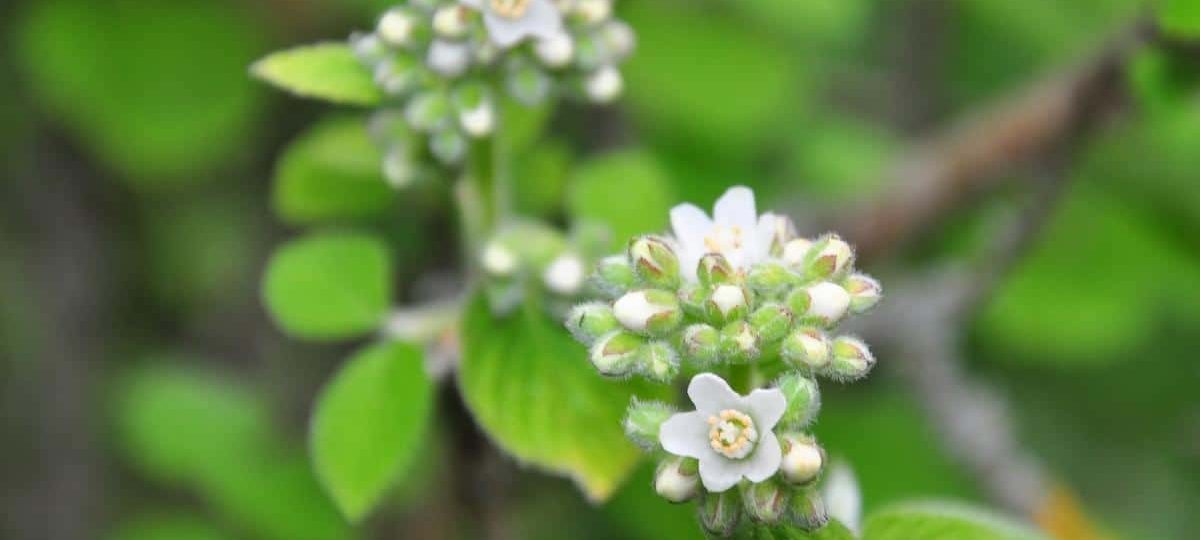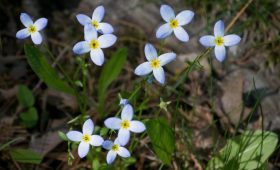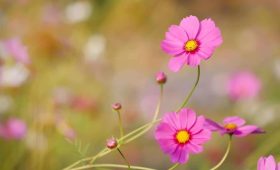memme.info – The Cliffbush (Jamesia americana), also known as American cliffbush or rock bush, is a lesser-known but remarkably resilient flowering shrub native to the western United States. With its unique ability to thrive in rocky, mountainous terrain, the cliffbush has earned a reputation for being both a survivor and a beauty in the harshest environments. Its graceful blooms, attractive foliage, and ecological benefits make it a valuable addition to both natural landscapes and cultivated gardens.
Botanical Description
Cliffbush is a deciduous shrub that typically grows between 3 and 6 feet tall, with a spreading habit that can extend up to 5 feet wide. The plant is known for its dense, arching stems and oval to lance-shaped leaves, which are often covered in fine hairs. The leaves are green in color during the growing season, turning yellow or red in the fall, which adds to the plant’s ornamental appeal.
The most striking feature of the cliffbush is its small, tubular flowers, which bloom in clusters. These flowers are typically pale pink to white, with a subtle, sweet fragrance. The blooms appear in late spring to early summer, creating a delicate contrast against the shrub’s green foliage. As the flowers fade, they are replaced by small, round fruits that mature into a dark purple or black color, attracting birds and other wildlife.
Habitat and Growth Conditions
Cliffbush is primarily found in the rocky foothills and mountain slopes of the western United States, particularly in areas with dry, well-drained soils. It thrives in USDA hardiness zones 5 to 9, where it can withstand both the heat of summer and the cold of winter. In its native habitat, it is often found growing among boulders or in crevices, where it can take advantage of the minimal soil and water resources available.
This shrub is highly adaptable to different soil types but prefers slightly acidic to neutral, well-drained soils. It is drought-tolerant once established, making it an ideal choice for xeriscaping and low-water gardens. Cliffbush can tolerate full sun to light shade, but it generally performs best in a sunny location, where it can produce an abundance of flowers.
The plant is well-suited to rock gardens, slopes, and other areas that are difficult to cultivate with other, more water-demanding plants. Its ability to grow in challenging conditions has made it an important species for erosion control and habitat restoration in rocky, mountainous regions.
Cultivation and Care
Cliffbush is relatively easy to grow and care for, making it a good choice for both novice and experienced gardeners. Planting this shrub involves selecting a well-drained site with adequate sunlight and providing the right growing conditions for success. Here’s a guide to planting and caring for cliffbush:
- Planting: When planting cliffbush, dig a hole twice the size of the root ball and backfill with well-draining soil. While the plant is drought-tolerant, it benefits from regular watering during its first year of growth to establish strong roots. Once established, cliffbush requires minimal watering.
- Soil and Mulching: Cliffbush prefers soils that are slightly acidic to neutral and well-drained. Adding organic matter such as compost to the soil can improve its texture and fertility. Mulching around the base of the plant helps retain moisture and control weeds, though it’s important to avoid excessive mulch around the stem to prevent rot.
- Pruning: Cliffbush benefits from light pruning to maintain its shape and promote healthy growth. It is best pruned after flowering, removing spent blooms and any dead or damaged wood. Over-pruning should be avoided, as it can limit flowering and damage the plant’s natural form.
- Fertilizing: While cliffbush does not require heavy fertilization, a balanced, slow-release fertilizer applied in early spring can encourage healthy growth and vibrant blooms. Be cautious not to over-fertilize, as this can lead to excessive foliage growth at the expense of flowers.
- Pest and Disease Control: Cliffbush is generally resistant to pests and diseases, but it can occasionally suffer from fungal infections or aphid infestations. If pests or diseases are detected, treat the plant with insecticidal soap or fungicide as needed. Regularly inspecting the plant for signs of stress or damage can help prevent problems before they become serious.
Symbolism and Cultural Significance
While the cliffbush does not have as much cultural significance as some other flowering plants, its ability to thrive in tough conditions gives it a symbolic meaning of resilience and endurance. In many indigenous cultures, plants that grow in harsh environments, like the cliffbush, are seen as symbols of strength and adaptability.
Its delicate flowers, in contrast to the rocky, dry environments it inhabits, also make it a symbol of beauty in adversity. Gardeners may appreciate the plant not only for its ornamental value but for its ability to thrive with minimal care, making it a symbol of resourcefulness and efficiency.
Ecological Benefits
Cliffbush provides valuable ecological benefits, particularly in its native environment. The plant helps with erosion control by stabilizing soil in rocky, mountainous areas. Its deep, spreading root system helps prevent soil from washing away during heavy rains, making it an important species for habitat restoration and land reclamation.
Additionally, the plant’s small fruits attract a variety of wildlife, including birds and small mammals, which help disperse seeds and contribute to the plant’s natural spread. The nectar-rich flowers also provide food for pollinators such as bees and butterflies, adding to the plant’s role in supporting local ecosystems.
Ornamental Uses
Cliffbush is an excellent choice for gardeners looking to add a hardy, low-maintenance plant to their landscapes. Its attractive flowers and foliage make it a valuable addition to rock gardens, dry gardens, and xeriscaping designs. Its ability to thrive in rocky, poor soils makes it an ideal plant for difficult-to-grow areas, such as hillsides or raised beds.
Because of its spreading habit and small size, cliffbush is also well-suited for use as a low hedge or groundcover. It works well in combination with other drought-tolerant plants, such as succulents, cacti, and other native shrubs. Its delicate flowers and soft foliage contrast beautifully with the rugged textures of rocks and boulders.
Conclusion
The cliffbush is a resilient and beautiful flowering shrub that offers both ecological benefits and ornamental appeal. With its ability to thrive in challenging environments, this hardy plant is perfect for low-maintenance gardens, rocky landscapes, and areas in need of erosion control. Its delicate flowers and adaptability make it a valuable addition to any garden, and its symbolism of resilience and beauty in adversity resonates with those who appreciate nature’s enduring strength. Whether used in natural landscapes or cultivated gardens, the cliffbush is sure to add a unique and graceful touch to any space.




